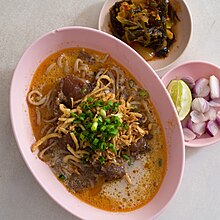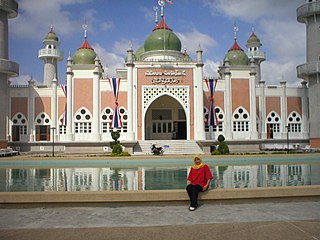
Pattani is one of the southern provinces of Thailand. Neighboring provinces are Narathiwat, Yala, and Songkhla. Its capital is the town of Pattani.
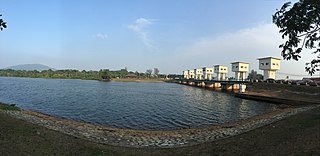
Narathiwat is one of the southern provinces (changwat) of Thailand. Neighboring provinces are Yala and Pattani. To the south it borders the Malaysian state of Kelantan and Perak. The southern railway line ends in this province, which is one of the nation's four provinces that border Malaysia. The province features a range of cultures as well as natural resources, and is relatively fertile. Narathiwat is about 1,140 kilometers south of Bangkok and has an area of 4,475 km2 (1,728 sq mi). Seventy-five percent of the area is jungle and mountains and has a tropical climate.

Yala is the southernmost Province (changwat) of Thailand. Neighboring provinces are Songkhla, Pattani, and Narathiwat. Yala is one of two landlocked provinces in southern Thailand, the other being Phatthalung. Its southern part borders Kedah and Perak of Malaysia.

Satun (Thai: สตูล, pronounced[sā.tūːn] is one of the southern provinces of Thailand. Neighboring provinces are Trang, Phatthalung, and Songkhla. To the south it borders Perlis of Malaysia.

PataniDarussalam is a historical region and sultanate in the Malay peninsula. It includes the southern Thai provinces of Pattani, Yala (Jala), Narathiwat (Menara), and parts of Songkhla (Singgora). Its capital was the town of Patani.
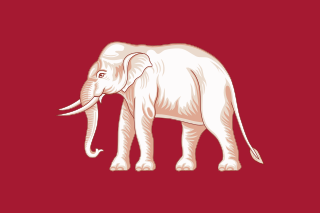
The Rattanakosin Kingdom, the Kingdom of Siam, or the Early Bangkok Empire (1767–1851), were names used to reference the fourth and current Thai kingdom in the history of Thailand. It was founded in 1782 with the establishment of Rattanakosin (Bangkok), which replaced the city of Thonburi as the capital of Siam. This article covers the period until the Siamese revolution of 1932.

Patani, or the Sultanate of Patani was a Malay sultanate in the historical Pattani Region. It covered approximately the area of the modern Thai provinces of Pattani, Yala, Narathiwat and part of the northern modern-day Malaysian state of Kelantan. The 2nd–15th century state of Langkasuka and 6–7th century state of Pan Pan may or may not have been related.
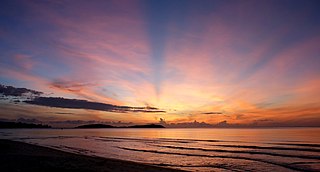
Southern Thailand, Southern Siam or Tambralinga is a southernmost cultural region of Thailand, separated from Central Thailand region by the Kra Isthmus.
Southern Thai, also known as Dambro, Pak Tai, or "Southern language", is a Southwestern Tai ethnolinguistic identity and language spoken in southern Thailand as well as by small communities in the northernmost Malaysian states. It is spoken by roughly five million people, and as a second language by the 1.5 million speakers of Pattani and other ethnic groups such as the local Peranakans communities, Negritos, and other tribal groups. Most speakers are also fluent in or understand the Central Thai dialects.
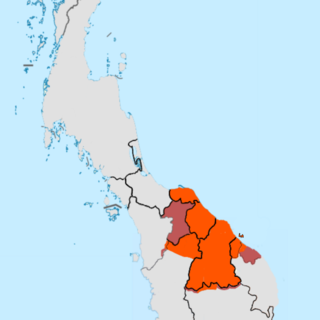
Kelantan-Pattani Malay is an Austronesian language of the Malayic subfamily spoken in the Malaysian state of Kelantan, as well as in Besut and Setiu districts of Terengganu state and the Perhentian Islands, and in the southernmost provinces of Thailand. It is the primary spoken language of Thai Malays, but is also used as a lingua franca by ethnic Southern Thais in rural areas, Muslim and non-Muslim and the Sam-Sam, a mostly Thai-speaking population of mixed Malay and Thai ancestry.

The South Thailand insurgency is an ongoing conflict centered in southern Thailand. It originated in 1948 as an ethnic and religious separatist insurgency in the historical Malay Patani Region, made up of the three southernmost provinces of Thailand and parts of a fourth, but has become more complex and increasingly violent since the early 2000s from drug cartels, oil smuggling networks, and sometimes pirate raids.
The Islamic Liberation Front of Patani, until 1986 known as the National Liberation Front of Patani is a militant Islamic separatist movement based in northern Malaysia and with a history of operations in the South Thailand insurgency.

Thailand is a country of some 70 ethnic groups, including at least 24 groups of ethnolinguistically Tai peoples, mainly the Central, Southern, Northeastern, and Northern Thais; 22 groups of Austroasiatic peoples, with substantial populations of Northern Khmer and Kuy; 11 groups speaking Sino-Tibetan languages, with the largest in population being the Karen; 3 groups of Austronesian peoples, i.e., the Malay, the majority ethnic group in the southernmost three provinces, together with the Moken and Urak Lawoi ; and both groups of Hmong-Mien. Other ethnic groups include longstanding immigrant communities such as the Chinese, Indians and Thai Portuguese.

Laos is a Buddhist-majority nation with the officially recognised Muslim population approximately constituting 0.01% of the total population as of 2008 census. The majority of Laotian Muslims are Sunni. Laotian Muslims can be found in the capital, Vientiane, which has two mosques, as well as other urban areas such as Savannakhet and Oudomxay; the latter of which had a mosque constructed there in June 2016. Laotian Muslims are an ethnically diverse group, mainly consisting of ethnic Lao, Chin Haw, Chams, Tamils and Pashtuns, with interracial marriages being increasingly popular. They are generally engaged in trade, agriculture, cosmetics, clothing and business though some have attained official roles with the government.

Buddhism is the largest religion in Thailand, practised by roughly 94% of the population. The Thai Constitution does not indicate any state religion, but promotes Buddhism, while guaranteeing religious freedom for all Thai citizens. Many other people, especially among the Isan ethnic group, practise Tai folk religions. A significant Muslim population, mostly constituted by Thai Malays, is present especially in the southern regions. Thai law officially recognizes five religions: Buddhism, Islam, Christianity, Hinduism, and Sikhism.

Thai Malays, with officially recognised terms including 'Malayu-descended Thais' and 'Malay', is a term used to refer to ethnic Malay citizens of Thailand, the sixth largest ethnic group in Thailand. Thailand is home to the third largest ethnic Malay population after Malaysia and Indonesia and most Malays are concentrated in the Southern provinces of Narathiwat, Pattani, Yala, Songkhla, and Satun. Phuket Ranong, and Trang home to a sizeable Muslim population, also have many people who are of Malay descent. A sizeable community also exists in Thailand's capital Bangkok, having descended from migrants or deportees who were relocated from the South from the 13th century onwards.
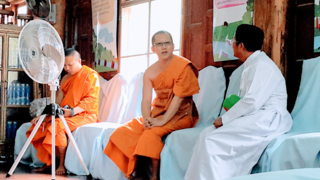
According to the 2018 census, Buddhism is the largest religion in Thailand, practiced by over 94% of the population; Islam makes up 5% of the population. The Thai government officially recognizes five religions: Buddhism, Islam, Hinduism, Sikhism, and Christianity.

The Chin Haw or Chin Ho, also known locally as Yunnanese, are Chinese people who migrated to Thailand via Myanmar or Laos. Most of them were originally from Yunnan, a southern province of China. They speak Southwestern Mandarin.

Krue Se Mosque also called Gresik Mosque, Pitu Krue-ban Mosque or Sultan Muzaffar Shah Mosque, is a mosque in Pattani Province, Thailand. Its construction may have begun in the 16th century. The surviving structure is described as having a mixture of Middle Eastern or European architectural styles.
Chaophraya Chakri, personal name Mahmud, Mud or Mood, was the Samuha Nayok or the Prime Minister of Siam serving during the early years of Thonburi Period under King Taksin. He was of a Muslim Persian-Malay descent and a descendant of Sultan Suleiman of Singora. He was colloquially known as Chaophraya Chakri Khaek, or "the Muslim Prime Minister".

![Haroon Mosque [th] Haroon Mosque masyidhaaruun May8 2020.jpg](http://upload.wikimedia.org/wikipedia/commons/thumb/b/b7/Haroon_Mosque_%E0%B8%A1%E0%B8%B1%E0%B8%AA%E0%B8%A2%E0%B8%B4%E0%B8%94%E0%B8%AE%E0%B8%B2%E0%B8%A3%E0%B8%B9%E0%B8%93_May8_2020.jpg/220px-Haroon_Mosque_%E0%B8%A1%E0%B8%B1%E0%B8%AA%E0%B8%A2%E0%B8%B4%E0%B8%94%E0%B8%AE%E0%B8%B2%E0%B8%A3%E0%B8%B9%E0%B8%93_May8_2020.jpg)



